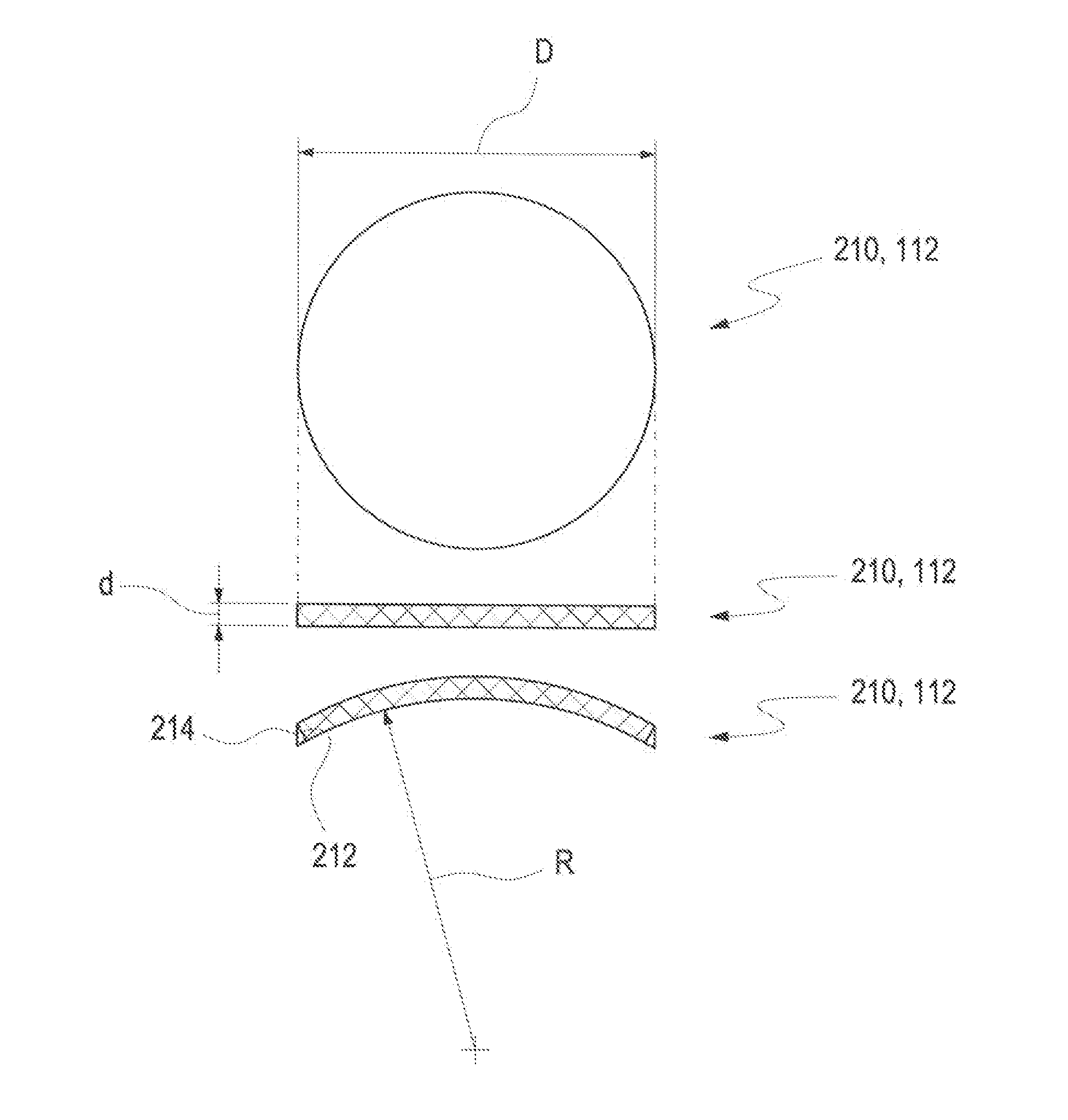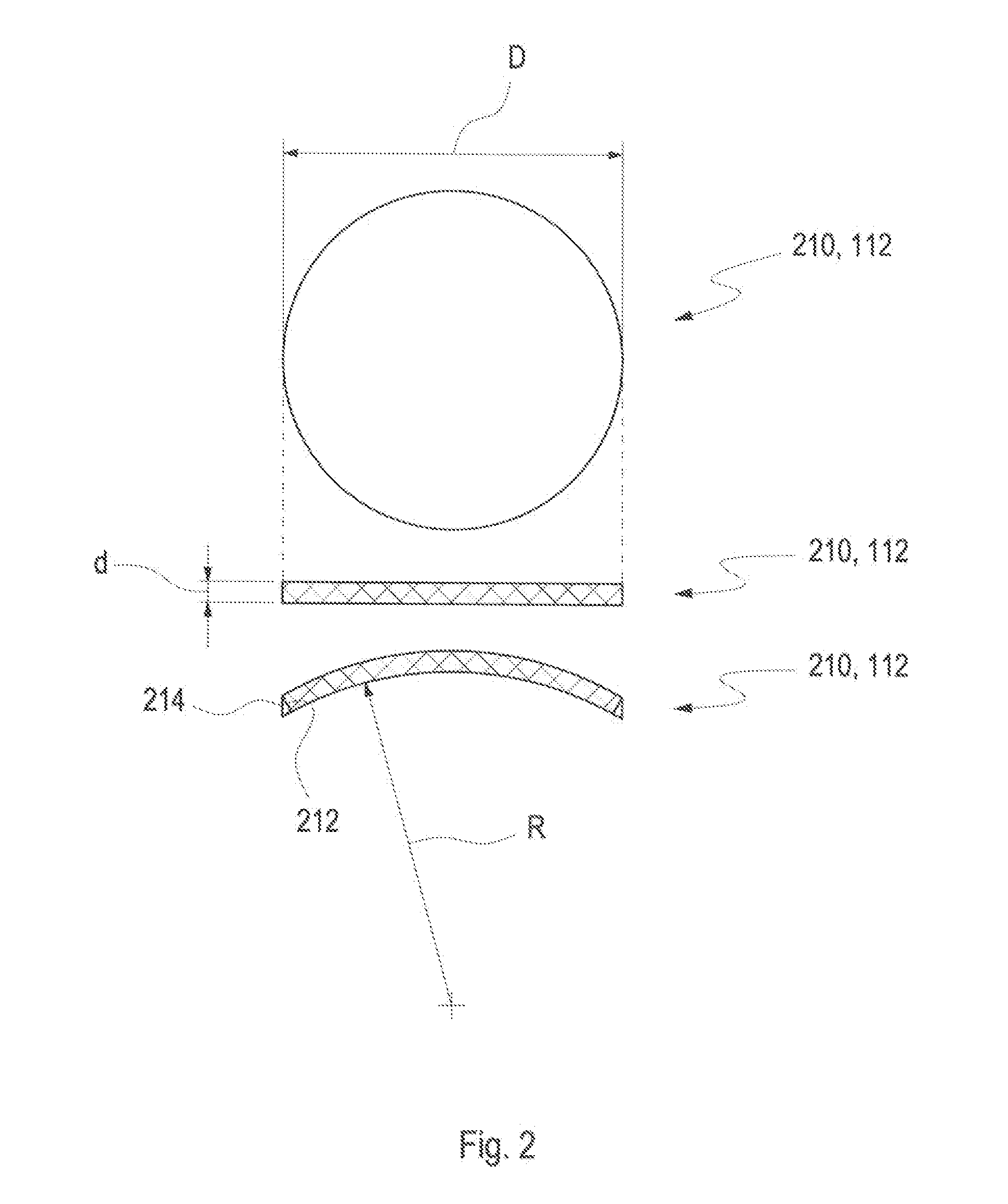Hydrogel implant for sensing metabolites in body tissue
- Summary
- Abstract
- Description
- Claims
- Application Information
AI Technical Summary
Benefits of technology
Problems solved by technology
Method used
Image
Examples
example 1
Production of Alginate Hydrogel Particles for the Sensor Components
[0060]Alginic acid sodium salt is dissolved with stirring in deionized water at 55° C. The alginate solution is sprayed by means of a two-fluid atomizer (Spraying Systems Co.) into an ultrasound bath filled with calcium chloride solution, where the alginate droplets set.
[0061]The set alginate particles are filtered through a 30 μm filter cloth, and the filtrate is concentrated by settling in the separating funnel. The alginate particles are then autoclaved as a 10% strength solution. Depending on the desired water content of the alginate particles, the concentration of the alginate solution can be varied between 0.2% and 10%. By suitable choice of the alginate type (molecular weight, ratio of guluronic acid to mannuronic acid), further fine-tuning of the network density is possible.
example 2
Optional Precoating of the Alginate Particles
[0062]The alginate particles are centrifuged off and are mixed in the ratio 1:1 (w / v) with polyallylamine hydrochloride in 10 mM acetate buffer, pH 5.5, and incubated for 5 minutes. The mixture is centrifuged, the supernatant is removed, and the alginate particles are washed twice, in each case for 2 minutes, in the ratio 1:2 (w / v) with 10 mM acetate buffer, pH 5.5, and centrifuged off. This procedure is repeated with polystyrene sulfonate in 10 mM acetate buffer, pH 5.5, as second coat. The procedure is repeated until the desired number of coats have been applied. The number of coats and the concentration of the polyelectrolytes determine the density of the precoating. Typical concentrations are between 0.05% and 1%, typical coat numbers between 1 and 6.
example 3
Filling the Precoated Alginate Spheres with Sensor Components Dextran and ConA
[0063]The (optionally precoated) alginate particles are centrifuged off, washed once with deionized water and are again centrifuged off.
[0064]The required amount of dextran is weighed out and dissolved in water.
[0065]1 ml of the dextran solution is added to 1 g of the centrifuged pellet of alginate particles, mixed by agitation, homogenized in an ultrasound bath, and incubated overnight at 2-8° C. The alginate spheres are then centrifuged off and separated from the supernatant. The amount of dextran taken up is calculated from the difference between the specific absorptions of supernatant before and after charging. Typical charges are between 0.01 and 10 mg of dextran per g of alginate particles.
[0066]ConA is dissolved in a concentration of 5-15 mg / ml in TRIS buffer, pH 7.4. The required amount of ConA is added to the dextran-filled pellet of alginate particles, mixed by agitation, homogenized in an ultras...
PUM
 Login to View More
Login to View More Abstract
Description
Claims
Application Information
 Login to View More
Login to View More - R&D
- Intellectual Property
- Life Sciences
- Materials
- Tech Scout
- Unparalleled Data Quality
- Higher Quality Content
- 60% Fewer Hallucinations
Browse by: Latest US Patents, China's latest patents, Technical Efficacy Thesaurus, Application Domain, Technology Topic, Popular Technical Reports.
© 2025 PatSnap. All rights reserved.Legal|Privacy policy|Modern Slavery Act Transparency Statement|Sitemap|About US| Contact US: help@patsnap.com



